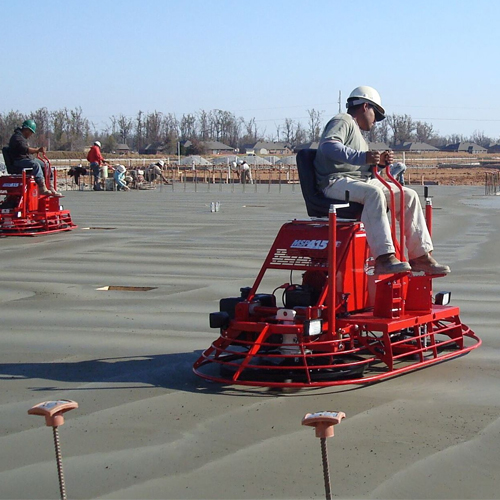HOW TO BOOST SUSTAINABILITY IN CONSTRUCTION
IMPROVING SUSTAINABILITY IN CONSTRUCTION: FOCUS ON YOUR EQUIPMENT
Construction sustainability isn’t just a trend; it’s become an essential part of how projects are completed. Prioritizing efficiency and environmentally friendly practices not only makes your business more appealing to potential customers, it can also minimize your costs. For example, reducing idle times and optimizing movement of equipment saves fuel and lowers emissions, which is better for both the environment and your budget. Similarly, electric equipment typically costs less to maintain and operate on a daily basis compared to diesel machines.
Here are the key strategies for boosting sustainability in construction:
- Stay on top of equipment preventive maintenance
- Use GPS and smart equipment technology
- Reduce idle time and optimize operation of equipment
- Implement use of electric equipment
- Train operators to improve efficiency
- Take a well-rounded approach to operations at your jobs
STAYING ON TOP OF EQUIPMENT PREVENTIVE MAINTENANCE
One of the most important pieces of construction equipment management is regular maintenance. Sticking to a service schedule keeps your machines running smoothly, cuts down on unnecessary wear, and avoids wasted fuel. Simple steps like oil changes, air filter replacements, and engine tune-ups help your equipment perform at its best. This approach not only minimizes fuel consumption but also prevents potential breakdowns that could lead to more significant environmental waste.
USE GPS AND SMART EQUIPMENT TECHNOLOGY
Telematics and similar systems offer real-time data on equipment location, usage, fuel consumption, and performance. By utilizing this technology, machine owners can gain extremely valuable insights into their fleet’s efficiency and recognize opportunities for improvement. In addition, these systems provide early warning signs of potential service needs, helping you prevent excessive wear, reduce overall environmental impact, and increase your operation’s sustainability.
CUTTING DOWN ON IDLE TIME AND UNNECESSARY MOVEMENT
The majority of jobsites end up wasting significant amounts of fuel through extended periods of idling and inefficient machine placement. Through careful planning of where your equipment will be located, how it will travel from one area of the jobsite to another, and establishing clear rules about idling and other operational protocols, owners can drastically reduce fuel consumption and emissions on the job. Effective construction equipment management requires training operators to be aware of machine positioning, creating a site layout that minimizes movement, and using technology to track and eliminate long idle times.
IMPLEMENTING ELECTRIC MACHINES
Electric equipment is becoming more and more practical as battery technology improves. These types of machines are crucial for improving construction sustainability, because they produce no direct emissions, are highly efficient, and often require less maintenance than diesel-powered alternatives. While they may cost more upfront, the long-term savings on fuel and routine service, along with their lower carbon footprint, make them a smart investment for your business. When it comes to electrifying your fleet, you can start in the areas where it makes the most sense, like for urban jobsites and indoor projects.
TRAINING OPERATORS FOR EFFICIENCY
Properly training operators helps them use equipment more effectively, saving fuel, extending machine life, and reducing environmental impact. A good training program should cover operating techniques, correct machine handling, the importance of equipment preventive maintenance, and the environmental impact of daily operator decisions. This education goes beyond technical skills; it creates a culture of environmental responsibility. By implementing effective training sessions, performance incentives, and continuous feedback mechanisms, fleet owners can empower their operators to become active participants in construction equipment management and sustainability efforts.
TAKING A WELL-ROUNDED APPROACH
Sustainability in construction is not about a single solution—it’s about a mix of smart strategies. By combining equipment preventive maintenance, advanced machine technology, better jobsite planning, electric machinery, and operator training, construction companies can reduce their environmental footprint while also lowering costs and maximizing efficiency.
If you have any questions about construction sustainability, equipment preventive maintenance, or construction equipment management in general, please contact our team today.
